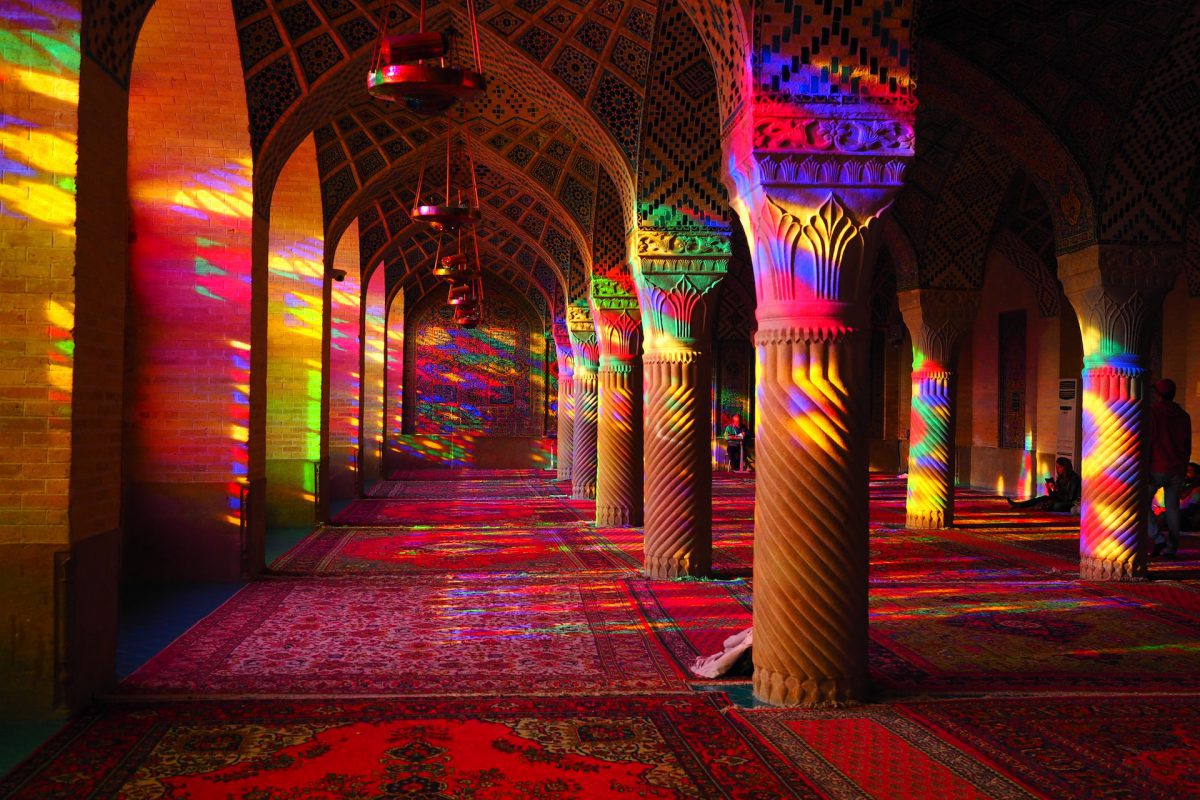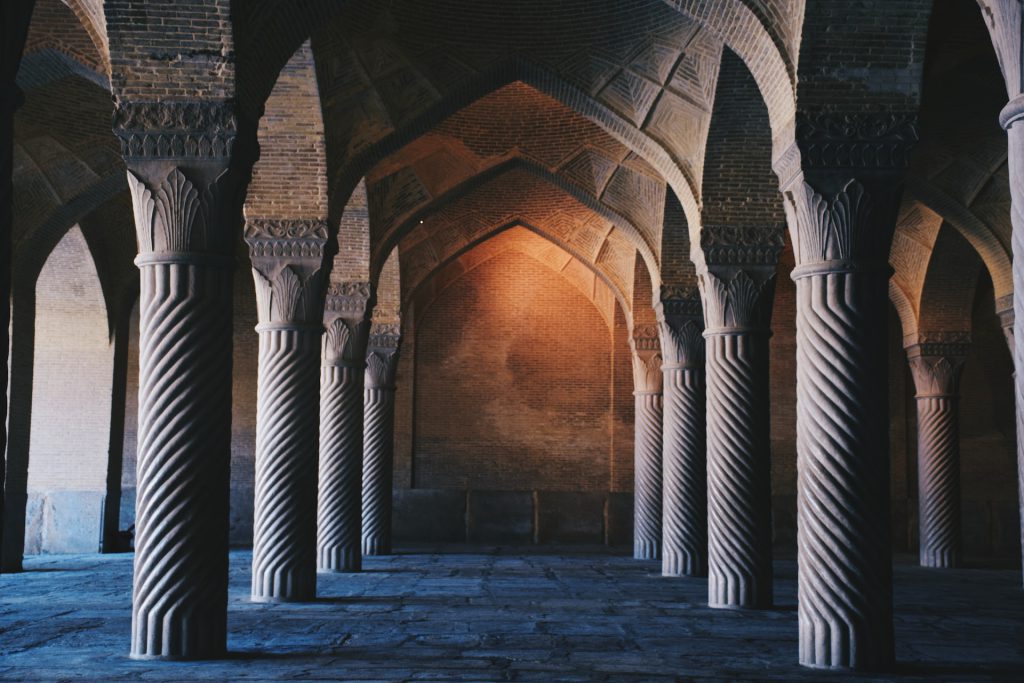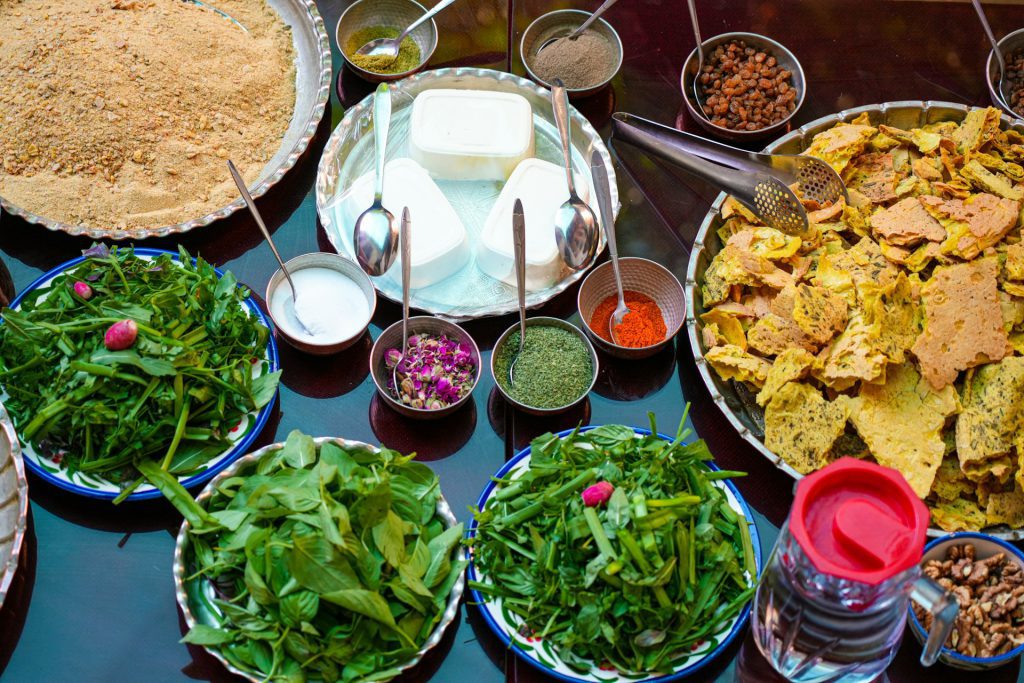Table of Contents
Shiraz in a Glance
Shiraz, a significant city in Iran, sits high in the Zagros mountains, 1486 meters above sea level, in the Fars province. It’s divided into three areas with six cities and 12 rural districts. The name Shiraz has ancient roots, found in inscriptions from the Achaemenid era at Persepolis.
This city has a rich cultural history and welcomes travelers to explore its beautiful landscapes and deep-rooted heritage. The city is an inviting place to take a journey through history and tradition.
History of Shiraz
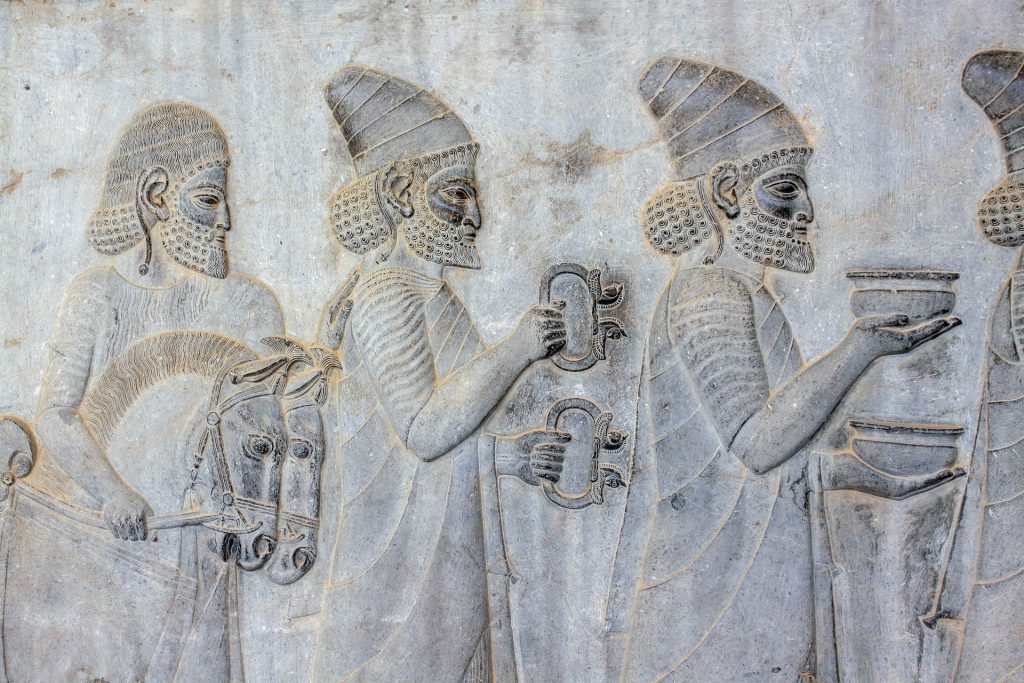
Iran is the land of mysteries. From east to west, north to south there are locations to be explored, unknown sights to be discovered and adventures to be experienced. There is a chance for all types of tourists to fulfill their interests and enjoy their time being in Iran; nature lovers to pilgrims and history lovers to handicraft fans. However, when it comes to culture, there is one place that comes to mind instantly; the city of love and literature.
This ancient city, known as the heartland of Persian culture, is one of the most important destinations of Iran. If not visited, you can count the trip incomplete. The history of this city goes long back in time, as it was the capital of Iran during the Zand dynasty when it regained its former prosperity after a period of suffering.
Shiraz Geological Characteristics
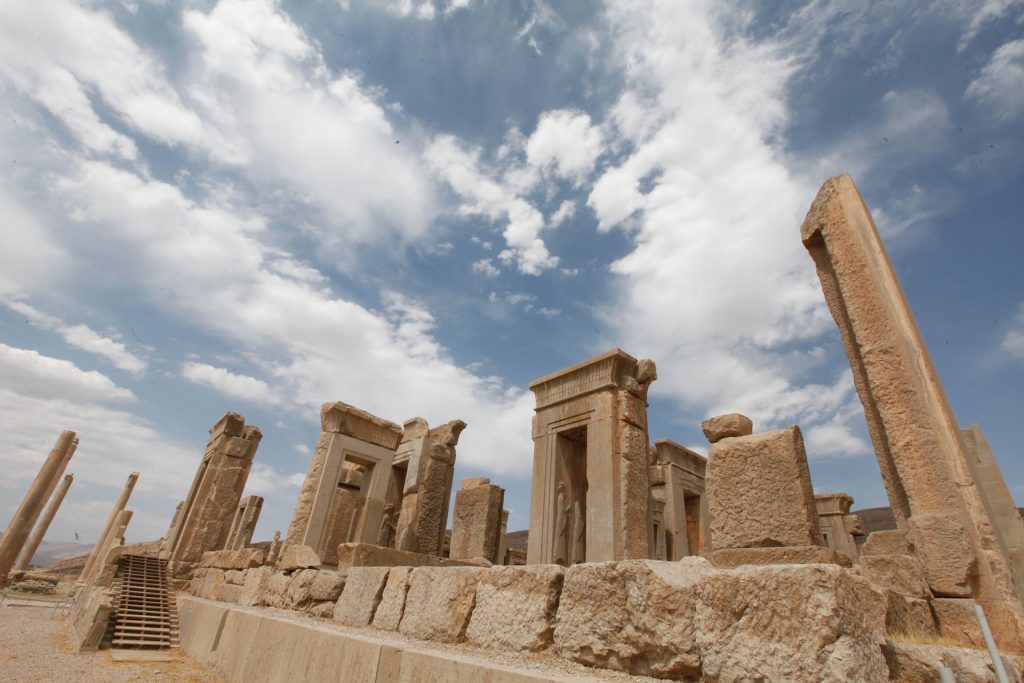
Shiraz’s natural charm goes beyond its culture and history. The city’s foundation is a unique blend of sedimentary rocks like conglomerate, limestone, marl, and shale. These rocks have a rich story to tell, taking us back in time. In 2013, Ghorbani’s research shed light on the city’s geological wonders, and Fig. 1 gives us a map of Iran with a special focus on Fars Province and the dust sampling sites scattered throughout the city.
Imagine these rocks as nature’s artwork, each with its own tale. Conglomerates are a mix of different rock pieces, representing the harmony in geological history. Limestone formations stand tall and enduring, while marl and shale offer an interesting contrast. The city’s geological wonders, discovered through dust sampling, let us connect with the Earth’s history. As you explore the city, it’s not just the vibrant culture that fascinates you but also the intriguing geology beneath your feet, waiting for you to discover its hidden stories.
Shiraz Weather/Climate

Shiraz, with its unique climate, experiences a striking duality in its seasons. Summers in this city can be described as sweltering, where the air is dry and the skies are usually crystal clear. These scorching days make you reach for your sun hat and sunglasses as you explore the city’s marvels. In contrast, the winters bring a different charm. They are cold, often accompanied by clear, starry nights. The chill in the air invites you to bundle up in cozy layers as you venture out.
Throughout the year, they city treats its residents and visitors to a temperature rollercoaster. The mercury typically ranges from 32°F to 99°F, providing a broad spectrum of weather experiences. Rarely do you find the temperature dipping below 26°F, and it’s a special occasion when it climbs above 103°F. This dynamic climate makes here a city of contrasts, where each season offers a unique and memorable journey for those who dare to explore its wonders.
Top Places to See in Shiraz
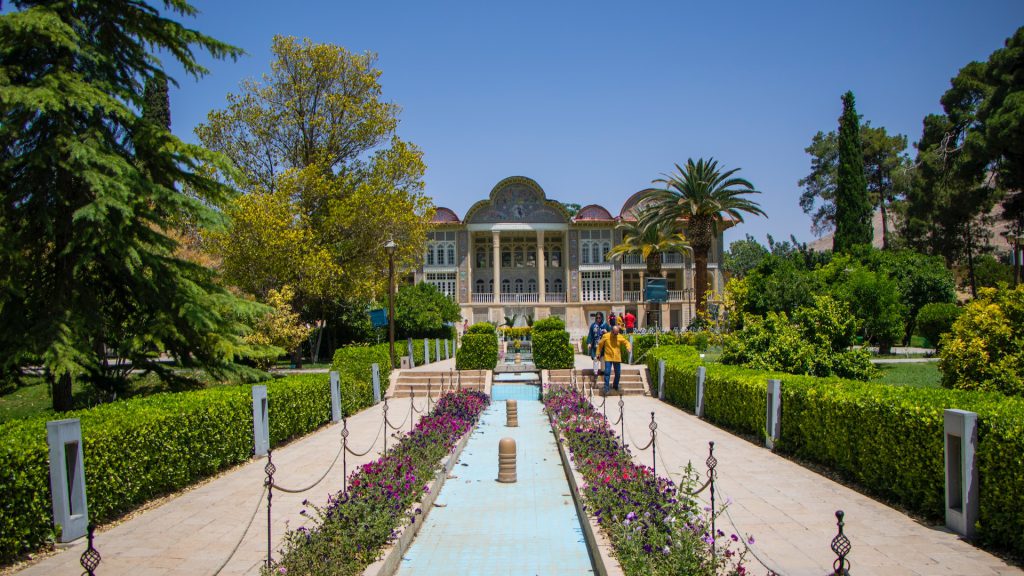
Throughout the years, Shiraz has become synonymous with poetry and literature, due to being the home to the graves of two world-known Persian poets, Hafez and Sa’di, both significant sites to Iranians. There are historical monuments such as Persepolis and Pasargadae which display the history of the city. The extraordinarily architected religious site of Nasir al-Molk Mosque, decorated with the play of colors and light mesmerizes anyone who pays a visit. Also, it is highly recommended not to miss the fabulous Persian Gardens in the city.
Quran Gate
In the old days, Shiraz used to have six gates but only one has survived. At the northeastern entrance of the city, stands a gate called Quran Gate, which is among the oldest gates in Iran.
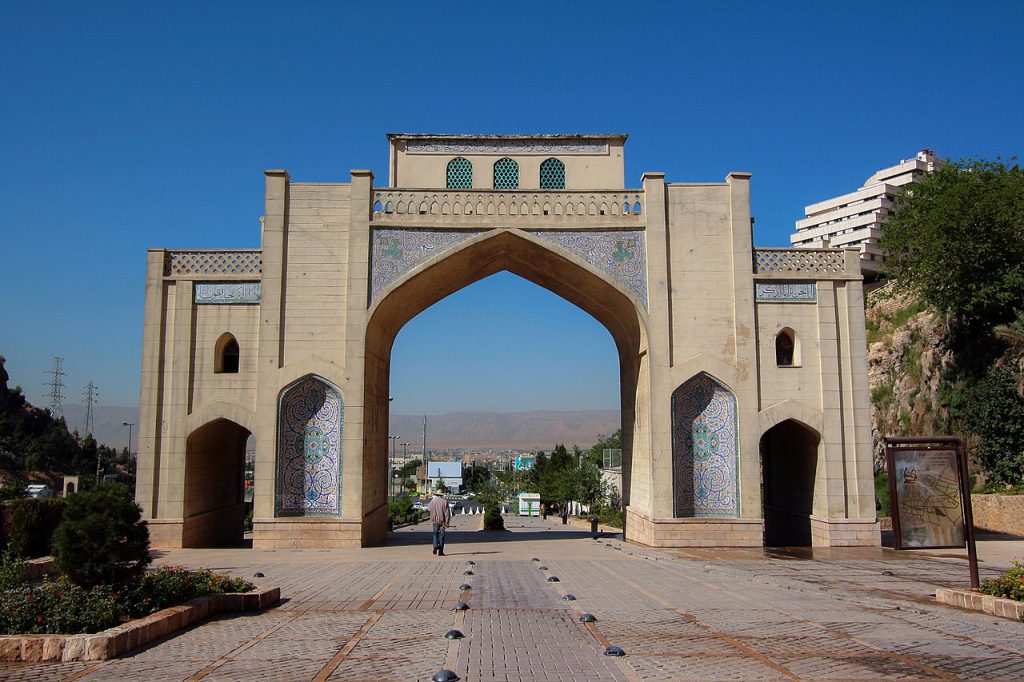
This is rooted in Muslims’ belief; that they pass under the Quran to be blessed and be protected from unpleasant events. So when passed underneath the Quran Gate, they had the blessing of the holy book to begin their trip.
It was first built in the Buyid dynasty and it was restored during the Zand dynasty since a lot of damage had been sustained.
Like most of the Iranian gates, Quran Gate is arc-shaped and has two similar columns on each side decorated by some verses of Quran in different calligraphy styles. The rectangular room on the top was added by the order of Karim Khan Zand, in which two hand-written copies of Quran were kept. However, the two Qurans were taken to the Pars Museum, remaining there to this day.
Tomb of Hafez
Shiraz owes its reputation to a great extent to its native poet, Hafez, who lived most of his life in his own town. He is considered the undeniable master of Ghazal, whose poems were inspired by his fellow-citizen poet, Sa’di. The mausoleum of Hafez, located in a garden known after him as the Hafezieh, is a small open pavilion inside which is a tombstone carved with the poet’s verses.
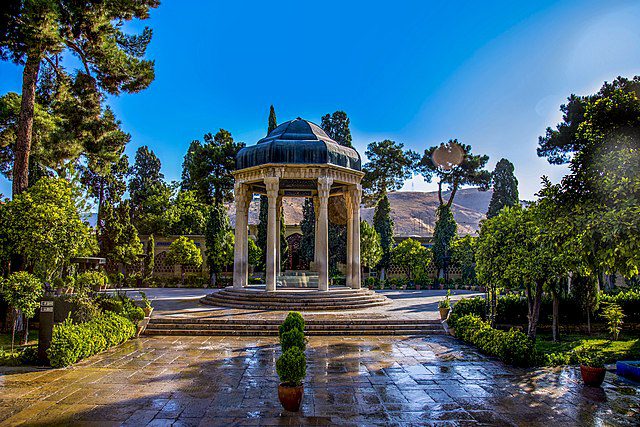
The vast popularity and appeal of Hafez among all Persian speakers make his tomb a cherished place. Iranians believe that his masterpiece, Divan Hafez, is able to tell fortune and there is an opportunity provided for the visitors to experience this at his tomb.
Tomb of Sa’di
The other extraordinary Shirazi poet, Sa’di, lies in this city. The mausoleum and its hospitable surrounding gardens are suitable for a man who rhymed extensively about gardens and roses in his lifetime. The tombstone is housed within this tranquil place in an open-sided stone colonnade, inscribed with his own poets supporting a turquoise dome.
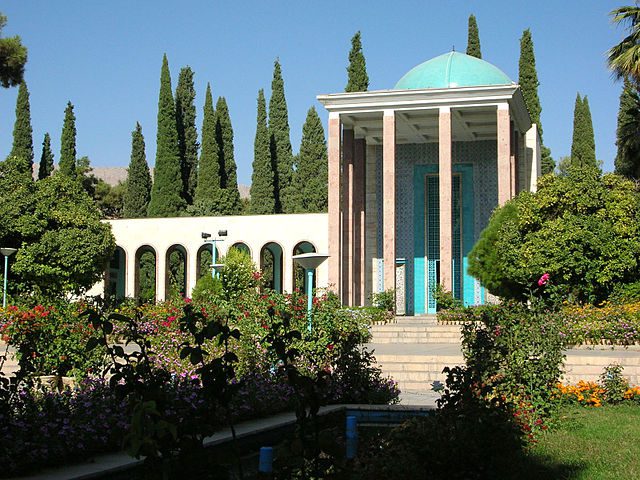
Sa’di wrote his two most known works in this splendid poetic city, the Bustan, and the Golestan, both narrating moral tales either in verse or in a mixture of prose and verse.
Nasir al-Molk Mosque
The ancient mosques in Iran are among the touristic sites due to their flawless architecture. But if only one had to be chosen, it is undoubtedly Nasir-al Molk Mosque, also known as the Pink Mosque or the Rainbow Mosque. At first sight, it looks like any other mosque; although, at sunrise, its particularity is revealed.
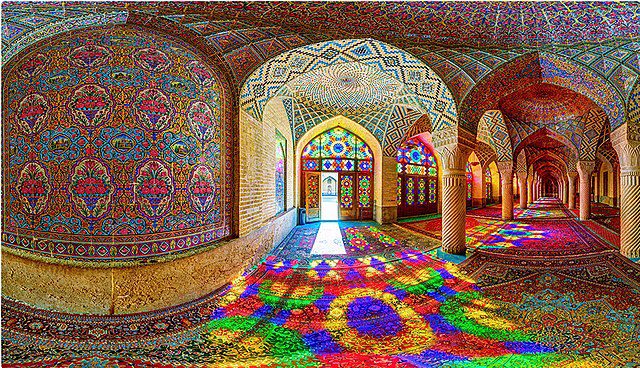
The spectacular tiling of the mosque, the employment of pink as the main color, and the use of colorful glasses which change the sunlight into colored strings, all lead to the uniqueness of the mosque. If you are to visit here, don’t miss this piece of art at any cost!
Persepolis
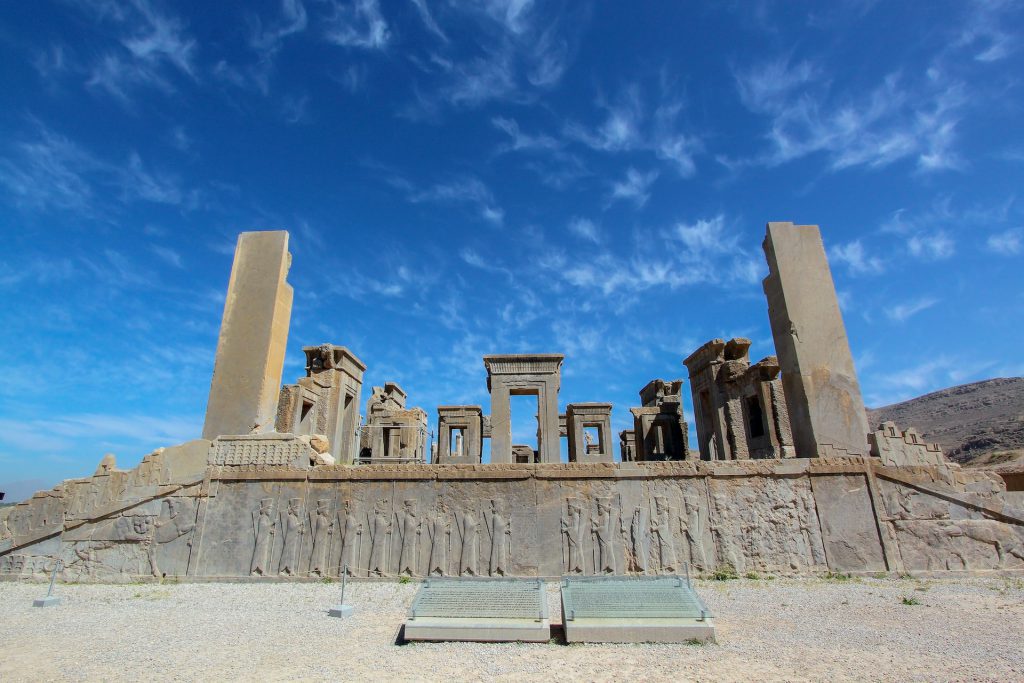
Even now that little signs of the magnificence of the monument have remained, this ancient remnant of Persepolis still embodies the glory of the Persian Empire. It was here that the Achaemenid rulers ran their empire and celebrated their national ceremonies such as Nowruz before Alexander III of Macedon burnt the whole structure down in the process of conquering the world.
Most of the stone has turned into grey over the millennia, as a result of dustiness. However, there are waxed remains from Persepolis in the National Museum in Tehran. Persepolis is a symbol of pride and civilization among Iranians.
Vakil Complex
Karim Khan Zand, the founder of the Zand Dynasty, had a major role in the development of the city. His legacy, the Vakil, or Zandiyeh complex, including the Citadel of Karim Khan, a bath, a mosque, and a bazaar, is located in the center of the city to give access to all the city residents.
The Citadel was initially used as the residential place of the royal family and it was also the military center during the Zand Dynasty. Later, in the Pahlavi Dynasty, it was turned into a prison.
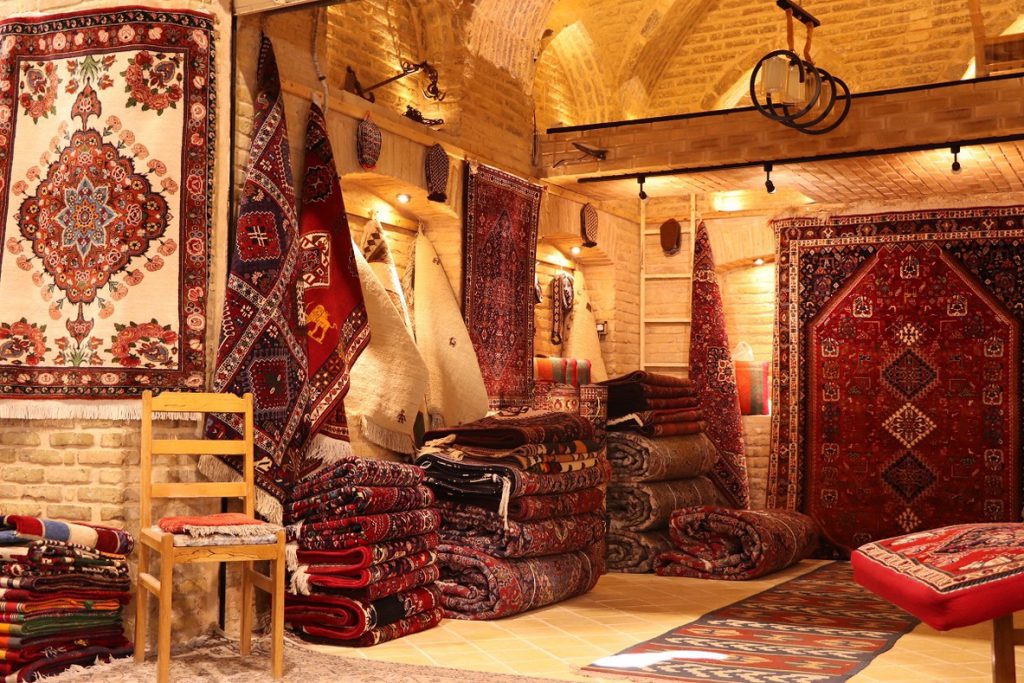
Vakil Bazaar is a roofed bazaar that regulates its temperature in different seasons, commissioned by Karim Khan as part of his plan to make the city a great trading center. Currently, a wide range of shops is available at the bazaar selling different kinds of spices, carpets, and handicrafts.
Eram Garden
The UNESCO World Heritage Listed Persian Gardens and their architecture are well-known all around the world and they can be found in many cities of Iran. The one located in the city is Eram Garden which is a complex containing an eye-catching garden as well as the colorful Qajar palace in the middle of it, with a pool in front. Famous for its tall cypress trees, the delightful Eram Garden welcomes visitors with its stunning scenery.
The best time to travel to Shiraz is spring because it highlights the beauty of the city more than ever, avenues embellished with colorful blossoms, and the air filled with their scent. Getting to know a nation’s finest culture, history, and art, is a gift to those who visit here. All this along with the hospitable people of the city. Paradise or not?
Shopping and the Best Souvenirs to Buy: Shiraz Travel Guide
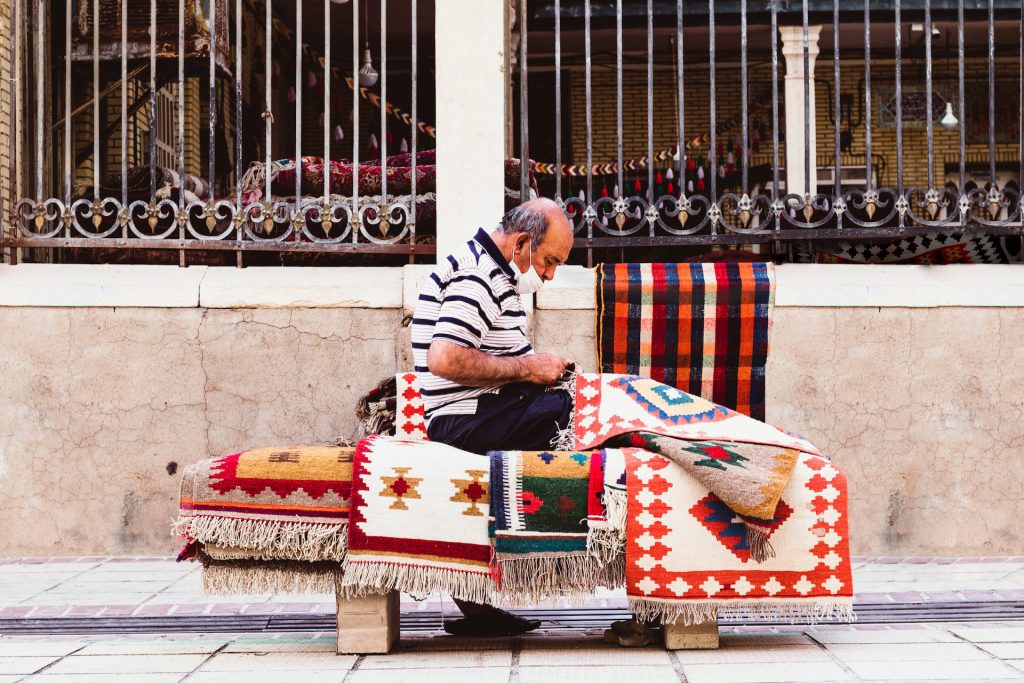
Shiraz souvenirs are so popular among the visitors of this city; from the most delicious traditional sweets to handicrafts and local arts. If you are planning to travel to Shiraz, you may be wondering what are the best souvenirs and where should you buy them. We will answer these here.
Masqati (Shirazi Halva)
Available in various flavors, including pistachio, rose, and saffron, with Larestan Masqati being a top choice among them.
Shirazi Faloodeh
A cool and delicious dessert, a must-try in cafes, markets, and at Shiraz’s famous attractions.

Youkhe
A sweet treat made with a thin paste of sugar and cinnamon, perfect for those with a sweet tooth.
Khatam Kari
An intricate and beautiful art form involving the assembly of delicate wood pieces in various colors and shapes.
Silver Objects and Dishes
Markets here display the craftsmanship of local artisans, making silver objects and dishes that captivate every visitor’s attention.
Ceramic Dishes and Objects
From Estahban in Fars Province, these souvenirs come in different qualities and colors, representing a rich tradition.
Wood Carving
An age-old craft that adds elegance to Shiraz’s souvenir offerings. Explore the markets and shops to discover these artistic treasures, each with a story to tell.
Nightlife in Shiraz
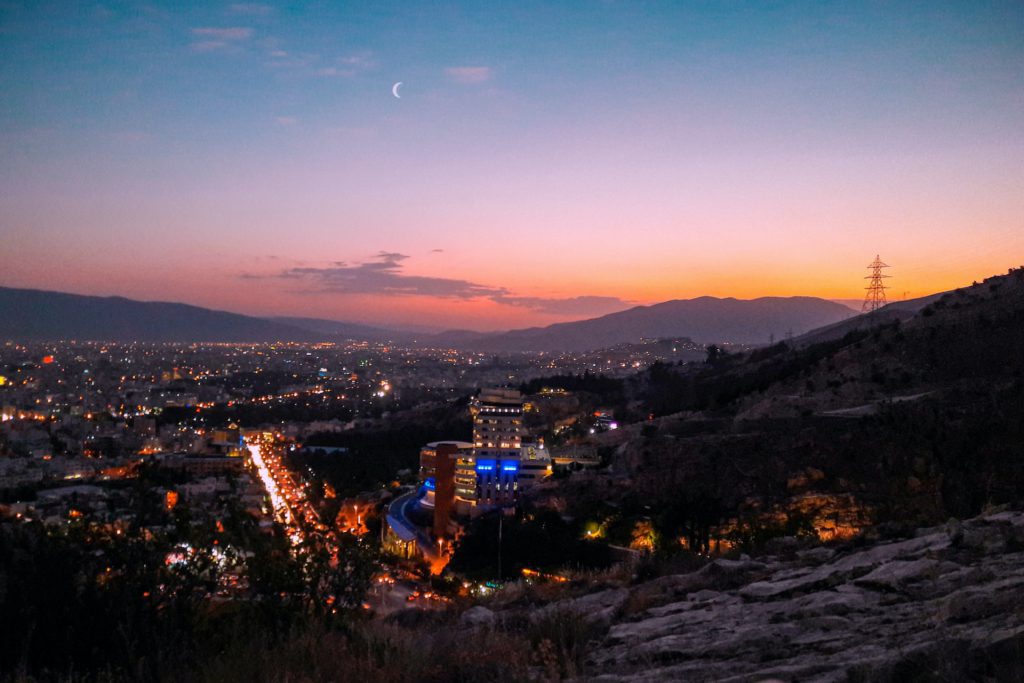
Shiraz nightlife, with its dreamy allure, is a captivating experience for those seeking an adventure under the starry Iranian sky. As the sun sets, the city takes on a new life, and here are some tips to make the most of your journey into this enchanting world. The illuminated streets invite leisurely walks, offering a blend of tradition and modernity, while cozy cafes and tea houses provide the perfect setting to sip chai and engage in heartfelt conversations with locals and fellow travelers. Don’t miss out on savoring the local culinary delights, from mouthwatering kebabs to aromatic stews.
Exploring historical landmarks like Persepolis or the Eram Garden by moonlight can be a truly magical experience. The nightlife also boasts a vibrant music and arts scene, with options to enjoy traditional Persian music and contemporary performances. It’s important to respect local customs and norms during your adventures, dress modestly, and remember that alcohol is strictly prohibited in public.
Embrace the charm of nighttime adventures, and let the starry sky be the backdrop to your unforgettable night.
Shiraz Suburbs
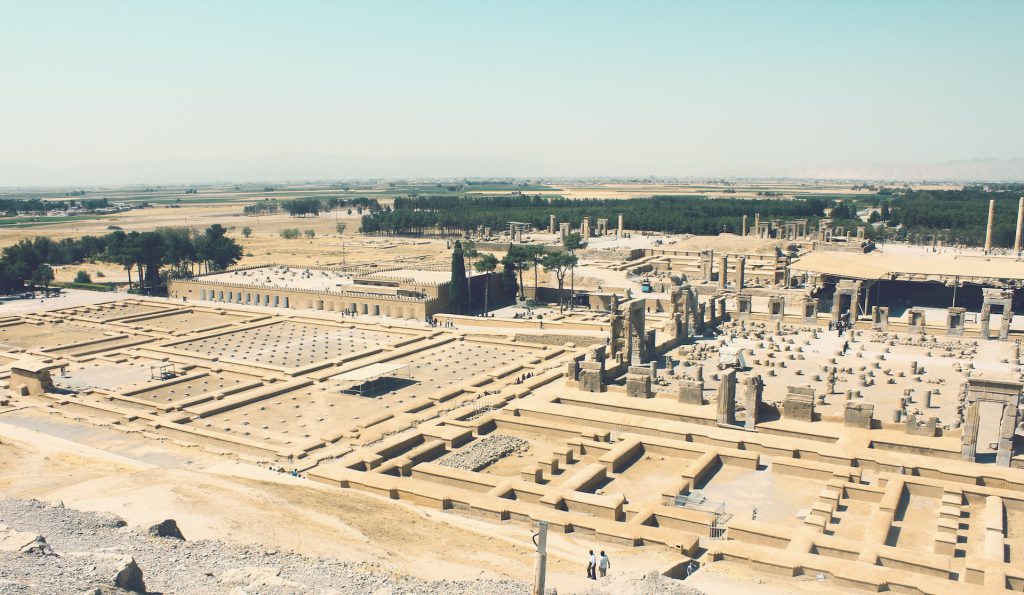
Qalat Village in Shiraz is a real treat for nature lovers. This charming place is a must-visit in the region because it’s all about the great outdoors. Picture lush greenery and loads of waterfalls that’ll take your breath away.
Qalat Village is like a haven of peace and beauty. When you’re there, you’ll be surrounded by stunning nature and the soothing sounds of waterfalls. It’s a fantastic spot for a relaxing break, some hiking fun, or a romantic escape. This little slice of paradise in Shiraz suburbs is a testament to the incredible beauty you can find if you look in the right places.
How to Get to Shiraz?
Shiraz, a city rich in history and culture, welcomes travelers with open arms. To reach this charming place, you have different ways to choose from. Whether you like driving on the roads, taking the bus, flying by plane, or enjoying a train ride, the city offers something for everyone. Let’s take a look at these travel options and how you can get to this wonderful city.
By Car
If you’re considering a road trip, you can reach the city by car via two main road routes. Road 65 connects Isfahan to Shiraz, while road 86 offers a route from Ahvaz and Kerman to Shiraz. You can also drive from the capital, Tehran, but in that case, you’ll need to pass through Isfahan on your way to Shiraz.
By Bus
The city is well-connected by bus services from both nearby and distant cities. There are daily bus routes available from various locations, and for added comfort, you can opt for VIP buses. These VIP buses provide more legroom and comfy seats, ensuring a pleasant journey between the major cities.
By Plane
Shiraz is accessible by air from several international cities, including Baku, Sharjah, Adana (seasonal), Vienna, Baghdad, Dubai, Kuwait, Najaf, Doha, Yerevan, Istanbul, Muscat, and Tbilisi. Domestically, you can catch a flight to Shiraz from Tehran, Mashhad, Abadan, Asaluyeh, Bandar Abbas, Bandar Lengeh, Kish, Bushehr, Isfahan, Ahwaz, Rasht, Tabriz, Kermanshah, Lar, Lamerd, Qeshm Island, Chabahar, Zahedan, Sari, and more.
By Train
Various train companies operate routes to Shiraz by rail. You can take a train from Tehran to reach Shiraz, with a daily night train departing in the afternoon and arriving in the city the following morning. This convenient train journey allows you to explore the scenic route to Shiraz in comfort.
Best Time to Visit Shiraz
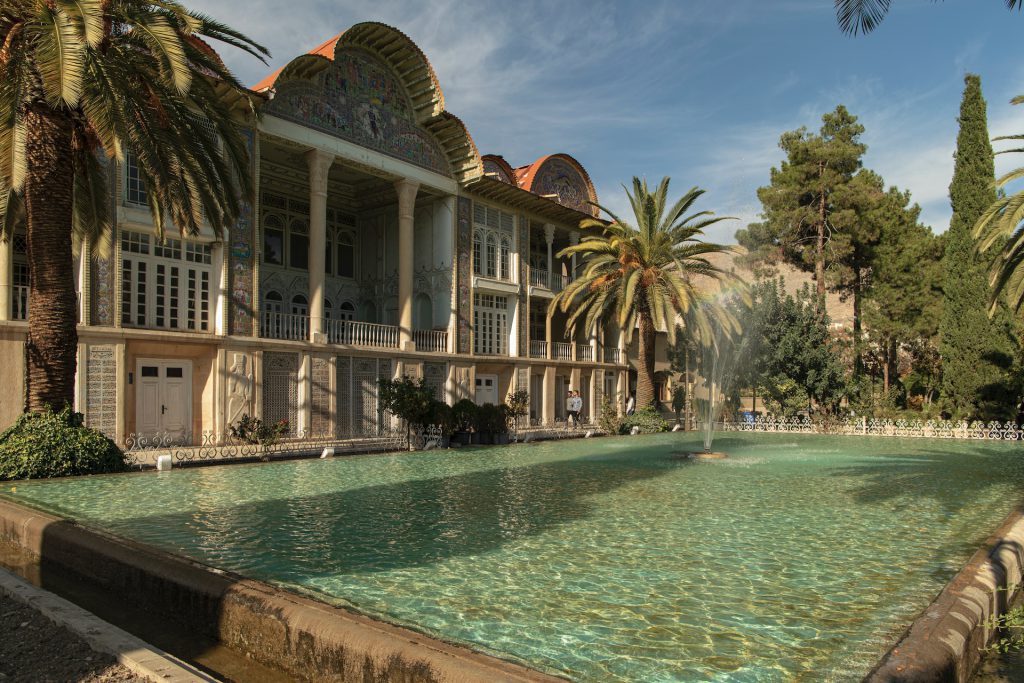
The best season to explore the wonders of Shiraz is undoubtedly spring. During this magical time, the city graces you with warm nights and comfortably bearable daytime temperatures. The gardens come to life with a vibrant tapestry of blossoms and budding flowers, offering a picture-perfect setting for your visit.
However, it’s essential to keep in mind that from mid-June onward, the weather starts to shift towards scorching heat and dry conditions, making the spring season the prime time to experience the beauty of the city.
Public Transportation in Shiraz

Shiraz prides itself on having a reliable transportation system that caters to the needs of its residents. Let’s take a closer look at the various ways to get around in the city:
Subway System
Shiraz has a subway system with plans for six lines, making it the second-largest in Iran. Currently, only the first line is operational, running from the city’s southeast to its northwest. This subway provides a convenient way to move around the city, making it easier for locals and visitors to travel.
Taxis
Getting a taxi in the city is simple and hassle-free, thanks to the numerous taxi terminals scattered across the city. Taxis are available 24/7, ensuring you have a flexible and accessible mode of transportation.
Intercity Buses
If you wish to explore other cities, the city has two major bus terminals: Karandish Bus Terminal and Ali ibn Hamze Bus Terminal. These terminals offer scheduled bus services to various destinations, allowing you to venture beyond the city.
Trains
Traveling to the city by train is an option, as the city is connected to major Iranian cities like Tehran and Isfahan through the national railway network. This railway connection makes it possible to reach the city by train, providing an alternative means of transportation.
133 Taxi Company
The 133 Taxi Company offers on-demand taxi services throughout the city. You can call them from anywhere in the city and request a ride. Additionally, it also has online taxi applications like Snapp and Tap30, similar to Uber, making it easy to book rides.
The transportation options are user-friendly and cater to the needs of both locals and tourists, making it convenient to get around the city and explore the surrounding areas.
Shiraz Best Foods
In the heart of the city’s vibrant food culture, a world of flavors awaits. Kalam Polo, a signature dish, showcases the city’s essence, while Ghambar Polo provides a taste of Shirazi tradition. Do Piazeh Aloo offers a unique culinary experience, and Ash-e Kardeh warms the soul with its flavorful soup. Shekar Polo is a delectable gem, and Havij Polo offers a unique blend of tastes. Koofteh Hooloo is a local favorite worth savoring, and Ranginak, a sweet treat, is the perfect ending to your culinary journey here.
Indulge in these top must-try foods and explore the richness of the city’s culinary excellence.
Shiraz Restaurants

Choosing the right restaurants in each city can give you a taste of the place’s culture. Here, there are not only historical and scenic spots to visit but also some fantastic places to eat. Let’s quickly look at the top spots to grab a bite in this beautiful city.
Haft Khan Restaurant Complex
Haft Khan Restaurant Complex is like a food wonderland with different floors offering various types of food, from traditional Iranian dishes to foreign cuisine, fast food, and even a coffee shop. Each floor has its unique menu and ambiance.
Vakil Cultural House
This restaurant used to be a bathhouse in ancient times, but now it’s a cozy place to enjoy food. Make sure to try Abgousht and cabbage rice with chicken here.
Soofi Traditional Restaurant
With its traditional decor and quality food, Soofi is a great option for exploring the rich taste of Shirazi cuisine.
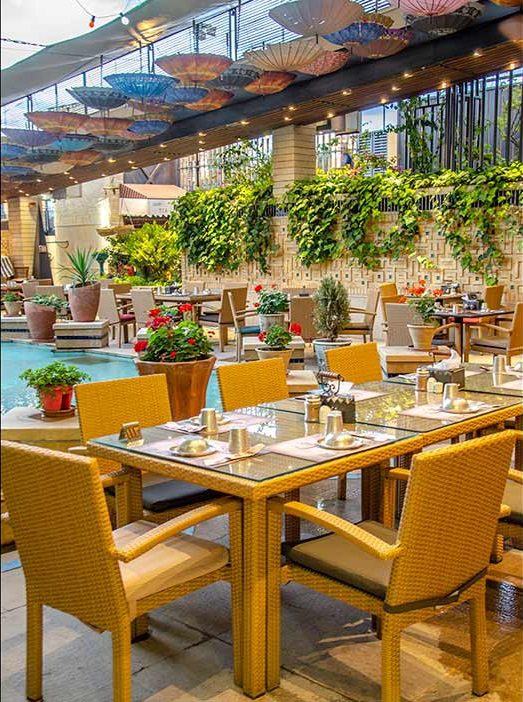
Shapouri Garden Traditional Restaurant
This restaurant is set in a historical and pleasant environment, offering various kebabs and Iranian and Western dishes. You can dine in the open air during summer nights and also explore a coffee shop and an art and handicrafts exhibition.
Sharzeh Restaurant
If you’re looking for an old but luxurious place near the old part of the city, Sharzeh is an excellent choice. They are known for serving the best kebabs in the city and often have live traditional music.
Dining in Shiraz is like a cultural journey, and each meal is a piece of the puzzle that makes your trip unforgettable.
Shiraz Hotels
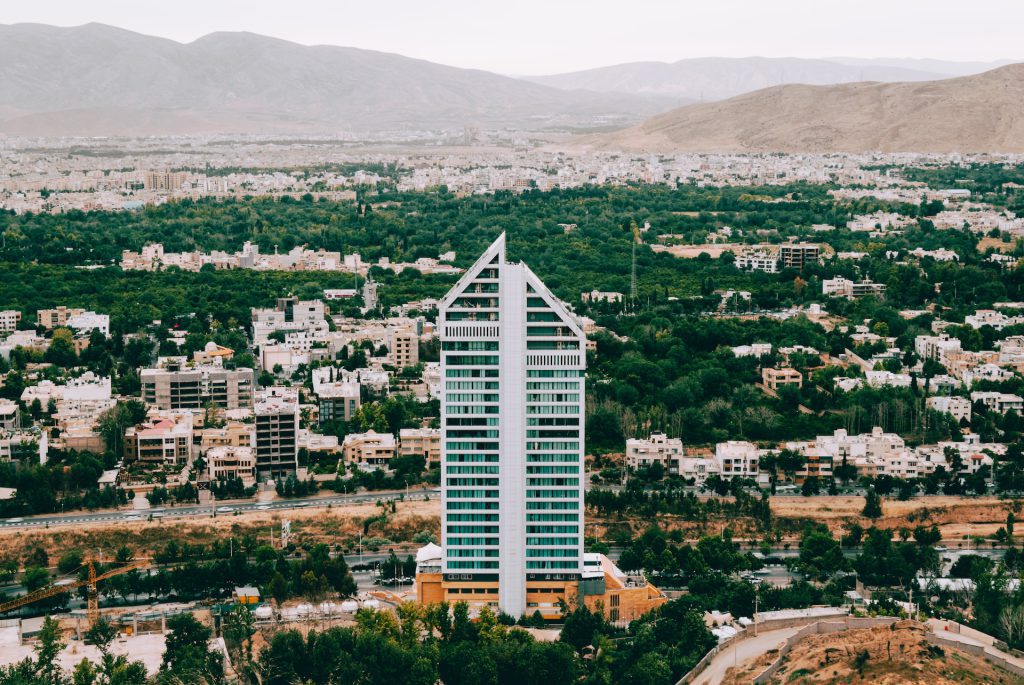
When selecting the best hotel in Shiraz, your choice will largely depend on your preferences, interests, and budget. Some travelers seek luxury hotels with comprehensive amenities, while others opt for simple, clean accommodations with traditional decor to immerse themselves in the city’s poetic atmosphere and save on expenses. Here, we’ll introduce some of the best hotels based on guest reviews:
Shiraz Grand Hotel
One of the city’s most famous and luxurious hotels, offering world-class facilities and amenities.
Pars Hotel
Located on the edge of the central zone, this popular hotel provides easy access to major attractions.
Zandiyeh Hotel
This 5-star hotel in the city center offers a variety of high-class services, inspired by Iranian architecture.

Royal Hotel
A modern hotel with efficient service and elegance, suitable for those seeking reasonable prices and quality service.
Karim Khan Hotel
Centrally located in the city, it offers a traditional ambiance and friendly service.
No matter your choice, the city offers a range of accommodation options to make your stay enjoyable and memorable.
Things to Know Before Visiting Shiraz
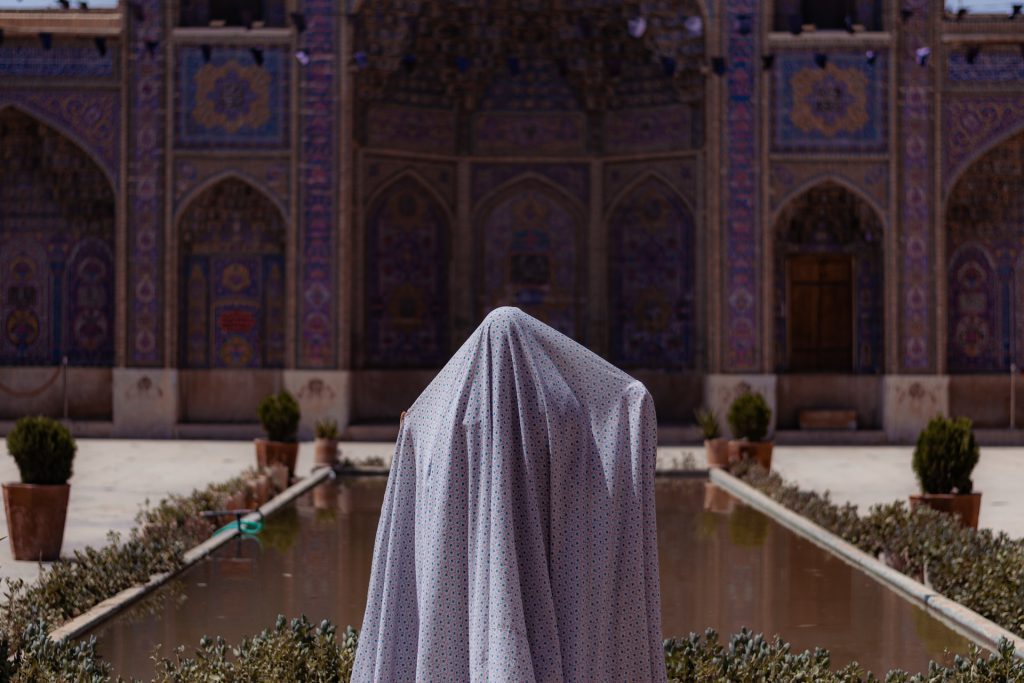
Before embarking on your journey to Shiraz, it’s important to understand a few key aspects that will enhance your visit.
Dressing Code in Shiraz
Shiraz, nestled in Iran, offers tourists a relaxed approach to the dress code. It’s not as strict as you might think. In this city, you can breathe easily, as people are quite open-minded when it comes to clothing.
You won’t be compelled to don a full hijab or chador throughout the city, except for specific places like the Shah-e Cheraq Holy Shrine. Even men can get by with long-sleeved shirts at these holy sites. So, when you’re packing for your journey, remember that you can balance comfort and respect for local customs without sacrificing your style.
Currency and Exchaange in Shiraz
Dealing with currency here might seem daunting, but don’t worry; we’ve got your back. Iran’s official currency is the Rial, but in daily life, people mostly use Toman. Unfortunately, international credit cards like Visa and MasterCard won’t work here. To avoid any financial stress, make sure to bring enough cash with you or be ready to exchange money as you go about your adventures. This way, you can enjoy the city’s rich culture, history, and food without any money-related troubles.
FAQs about Shiraz
Q1: What is Shiraz Iran famous for?
A1: Shiraz is well-known for making carpets and growing flowers. It has a long history of making wine called Shirazi. It is also a significant place in Iran for IT, communication, electronics, and transportation.
Q2: Is Shiraz a beautiful city?
A2: When you ask travelers, many of them say that Shiraz is the most beautiful city they’ve visited in Iran. It’s a part of the popular route for visiting Iran, and it’s situated in the southern part of the country, specifically in the Fars region.
Q3: What is Shiraz like in Iran?
A3: Shiraz, a real gem in Iran, has a history that goes back to the Achaemenid Era. It’s often called the “city of poetry and literature” because it’s where famous Persian poets like Hafez and Sa’adi are buried. It is also famous for its beautiful and peaceful gardens.
Q4: What is a fun fact about Shiraz Iran?
A4: Shiraz is renowned for its wine and is a place with a rich history as well as a charming modern city. It features gardens, shrines, and mosques. It is also the hometown of Persian poets Sa’di and Hafez, and their garden tombs, which have been beautifully restored, can be found on the northern outskirts of the city.
Q5: Why go to Shiraz?
A5: As the capital of Fars Province, Shiraz is one of the most populous cities in Iran. Yet, despite its size, the fragrance of bitter orange blossoms, the peacefulness of its lush gardens, and the whispers of its ancient landmarks all beckon you to consider a truly authentic experience.
Q6: Is it worth it to go to Shiraz?
A6: Shiraz boasts fantastic attractions from the Islamic era, and there are also impressive monuments from the Qajar Dynasty. The Qavam family, who governed the Fars region during the Qajar Period, constructed some remarkable structures here, including the beautiful Naranjestan Garden, which translates to “the garden of bitter oranges.”
Q7: Why is it called Shiraz?
A7: In the past, the name “Shiraz” was associated with the wine made near the city in what is now Iran. In modern times, “Shiraz” is another term for the Syrah grape, commonly used in Australia and South Africa.
Q8: What language is spoken in Shiraz Iran?
A8: Judeo-Shirazi is a Southwest Iranian language spoken by the Jewish community in Shiraz, even though most of the non-Jewish residents switched to speaking Persian.
Q9: How old is Shiraz Iran?
A9: The city of Shiraz, Iran, has a history of over 4,000 years.
Q10: What religion is Shiraz Iran?
A10: The majority of Shiraz’s population is Muslim. In the past, the city had a Jewish community of around 20,000 people, but most of them left for the United States and Israel during the latter part of the 20th century. Currently, the city has only two active churches, one Armenian and the other Anglican.
Last Words: Experience the Best of Shiraz with a Customized Tour
Shiraz, the heart of Persian culture and an ancient city in Iran is a must-visit destination. It has a rich history, serving as Iran’s capital during the Zand dynasty, marking a revival after a period of hardship.
When it comes to traveling to Iran and experiencing the enchanting city of Shiraz, the key to a truly unforgettable adventure lies in personalized and customized tours. In the realm of Iran tours, To Iran Tour stands out as a professional and dedicated travel agency that specializes in designing tours to Iran that cater to your unique preferences.
Whether you’re a history enthusiast looking to explore the ancient ruins of Persepolis, a foodie eager to savor the flavors of Persian cuisine, or a nature lover keen to hike through the picturesque landscapes, our team is here to help you create a travel plan that suits you perfectly. We’re here to make your journey to Iran a truly special one.

